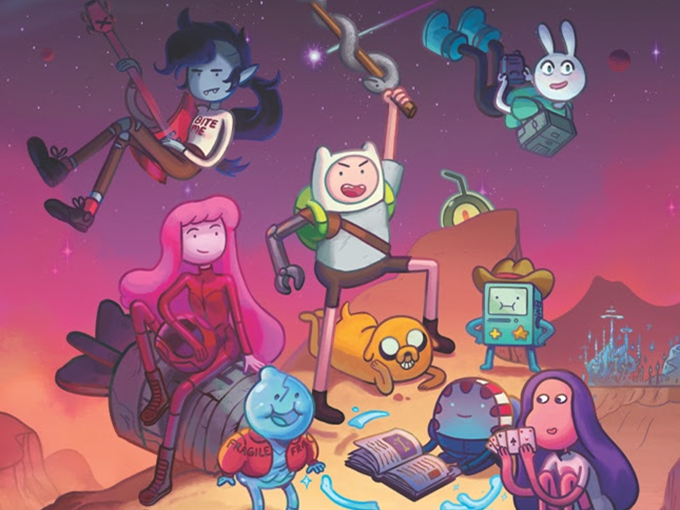As the 2010s wind down, Kidscreen’s look back at the decade concludes with a few key trends that influenced kid’s television. Unsurprisingly, streaming was front and center.
On-demand platforms like Amazon, Netflix and YouTube have forever changed the way kids (and parents) watch content, and how traditional linear kidcasters approach business. Appointment TV is no longer de regueur as children increasingly favor videos that can be watched any time of the day, anywhere and on multiple screens.
Here’s a look at some of the most significant TV moves from the 2010s.
On-demand viewing
From established SVODs with kids content libraries like Amazon, YouTube and Hulu to new kids on the block Disney+ and Apple TV+, streaming caught on like wildfire this decade, but no other platform impacted children’s TV quite like Netflix. While its streaming service originally launched in 2007, it wasn’t until 2010 that things got kicked into high gear, as the SVOD expanded to Canada to launch its international push.
Original content deals began in earnest in 2013, and knowing original kids content would be important for retaining parents as customers, Netflix signed DreamWorks Animation Television in 2013 to produce the platform’s first-ever original kids series, Turbo FAST. Later that year, it secured an exclusive multi-year deal with DreamWorks for more than 300 hours of original content inspired by characters from DWA’s popular film franchises. Today, the SVOD has exclusive deals for original kids series and movies (both animation and live action) with the likes of Nickelodeon, Kuku Studios and the Storybots creators, as well as a number of former Disney creatives, including High School Musical director Kenny Ortega, ex-Pixar producer Darla Anderson and Doc McStuffins creator Chris Nee.
Today, Netflix operates in more than 190 countries with nearly 160 million worldwide paid subscribers, but cracks in its armor are beginning to show. In Q3 2019, the service missed its subscriber targets in the US—its largest market—for the second straight quarter due to a price increase made earlier in the year. The company also acknowledged that the influx of new SVODs like Disney+ could affect its near-term growth.
Influential animation
The 2010s saw a fair share of subversive animated series take off like Adult Swim’s time-travelling, envelope-pushing cult hit Rick and Morty, but one of the most influential shows that affected an even broader demographic was Cartoon Network’s Adventure Time. Based on a short for Nicktoons and Frederator Studios’ TV series Random! Cartoons, the sword-and-sorcery animated series from creator Pendleton Ward (Bravest Warriors) premiered in 2010 and introduced audiences to the whimsical, dark and surprisingly poignant tales of teenage boy, Finn, and his adoptive, magical dog brother, Jake. The series became a global success with nearly 300 episodes, multiple Emmy wins and brand extensions across video games, consumer products, theme parks and more. It also served as a talent incubator for many of the show’s writers and artists who moved on to their own successful Cartoon Network projects. Among them were Rebecca Sugar (Steven Universe), Patrick McCale (Over the Garden Wall), Ian Jones-Quartey (OK K.O.! Let’s Be Heroes) and Julia Pott (Summer Camp Island). The series, which ended after season 10 in 2018, is now set to return in 2020 with four brand new one-hour specials (pictured) ordered by WarnerMedia streamer HBO Max.
LGBTQ+ content
It’s taken a long time, but audiences finally got to see some historic moments play out in some of kid’s TV’s biggest shows. Among them, an episode of Nickelodeon comedy The Loud House from 2016 featured gay dads; Disney Channel aired its first coming-out story in a 2017 episode of popular tween series Andi Mack; and a recent episode of CN hit Steven Universe featured a wedding between two non-binary characters. That show also became the first-ever animated series to win GLAAD’s Outstanding Kids & Family Programming Award this past March. Despite the progress, LGBTQ+ representation in children’s television still needs a lot of work. According to the latest report from The Geena Davis Institute on Gender, LGBTQ+ characters in kid’s TV are “virtually non-existent” and when they are represented they are likely to be seen as having low intelligence and are verbally sexually objectified.
Merger madness
After buying Marvel Entertainment in 2009 for a cool US$4 billion, Disney’s spending spree continued well into the 2010s when it acquired Lucasfilm in 2013 for another US$4 billion and large parts of Fox’s film and television properties for a whopping US$71.3 billion earlier this year. Comcast joined the fray in 2016 when it bought DreamWorks Animation for nearly US$4 billion. With DWA’s feature film, TV series, live entertainment and related consumer products businesses, Comcast-owned NBCUniversal further strengthened its position in the kids entertainment space, and, most importantly, gave it more leverage to compete with Disney. Key recent maneuvers saw American media company CBS acquire Viacom for more than US$28 billion and AT&T takeover WarnerMedia for US$85.4 billion.





















